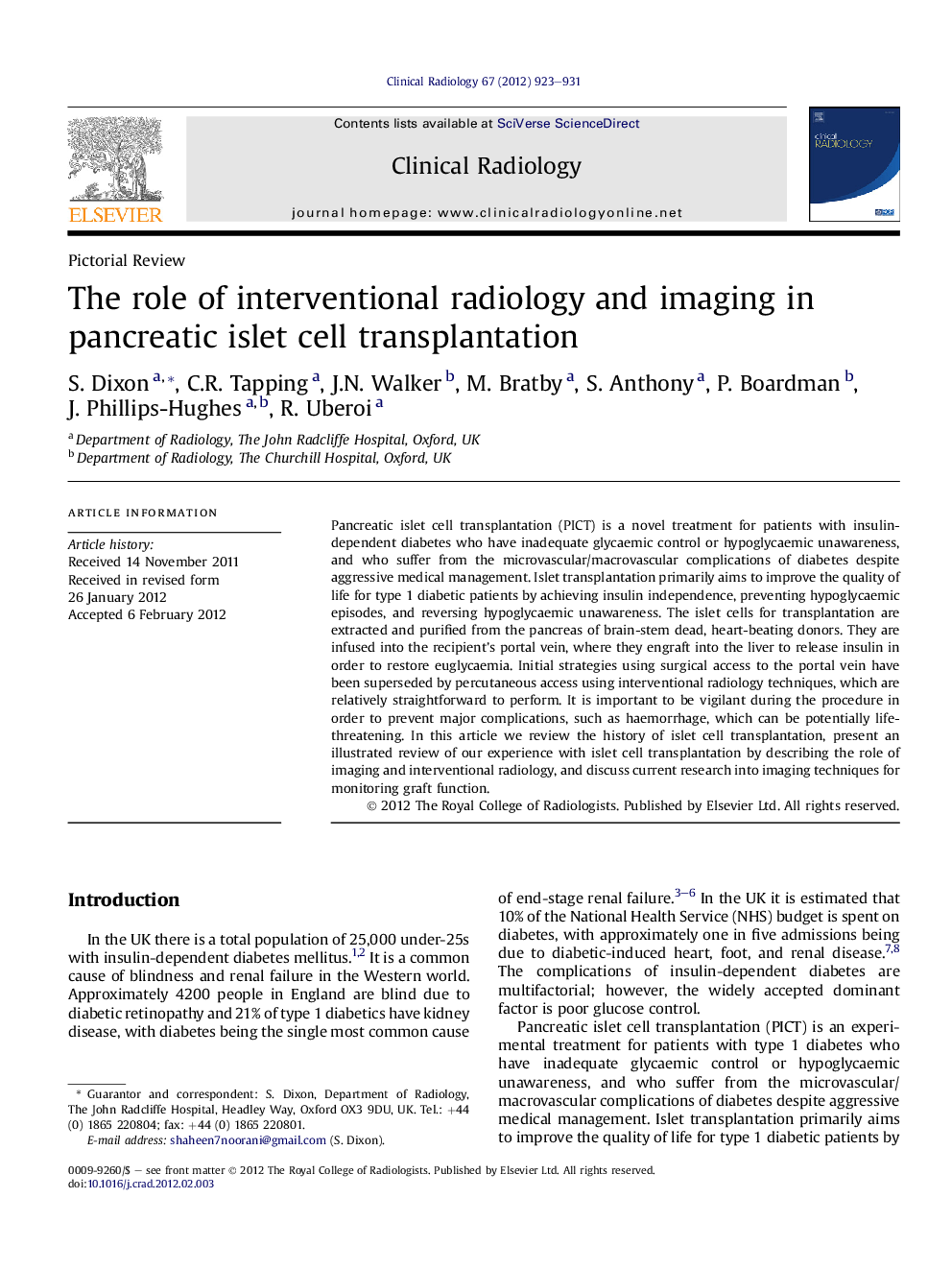| Article ID | Journal | Published Year | Pages | File Type |
|---|---|---|---|---|
| 3982003 | Clinical Radiology | 2012 | 9 Pages |
Pancreatic islet cell transplantation (PICT) is a novel treatment for patients with insulin-dependent diabetes who have inadequate glycaemic control or hypoglycaemic unawareness, and who suffer from the microvascular/macrovascular complications of diabetes despite aggressive medical management. Islet transplantation primarily aims to improve the quality of life for type 1 diabetic patients by achieving insulin independence, preventing hypoglycaemic episodes, and reversing hypoglycaemic unawareness. The islet cells for transplantation are extracted and purified from the pancreas of brain-stem dead, heart-beating donors. They are infused into the recipient's portal vein, where they engraft into the liver to release insulin in order to restore euglycaemia. Initial strategies using surgical access to the portal vein have been superseded by percutaneous access using interventional radiology techniques, which are relatively straightforward to perform. It is important to be vigilant during the procedure in order to prevent major complications, such as haemorrhage, which can be potentially life-threatening. In this article we review the history of islet cell transplantation, present an illustrated review of our experience with islet cell transplantation by describing the role of imaging and interventional radiology, and discuss current research into imaging techniques for monitoring graft function.
